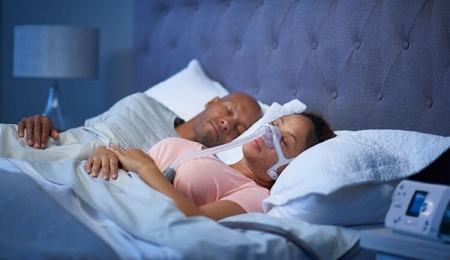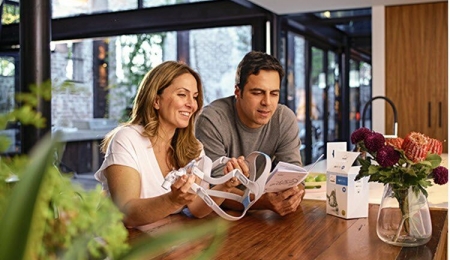

Whether patients with OSA sleep on their backs or facedown flat on their chests, sleep specialists know that sleep position matters for oxygenation. New research attempts to quantify the impact.
By Lisa Spear
It’s safe to say that most people don’t think too much or even have any awareness of their posture during sleep. A person could flop over on their back in the middle of the night, before rolling over to wake up on their side in the morning, completely oblivious of changing positions. Unbeknownst to them, their nocturnal body position could also be disrupting their breathing.
In particular, the position of sleeping face up, known as supine sleep, is the worst offender for people with obstructive sleep apnea (OSA), contributing to drops in blood oxygen levels throughout the night. In the supine position, gravity pulls the muscles of the airway back, which can lead to more apneas. This is by no means new information. Sleep medicine physicians are aware that position can change the way the human body takes in air.
“Interestingly, in our COVID units, no one is sleeping on their back. Everyone is put on their stomachs or on their sides. And that is because it is seen that the oxygen levels drop down quite a bit when people are on their back side and this is obviously detrimental to someone with a COVID-related infection,” says sleep scientist Mark Boulos, MD, MSc, who is a staff neurologist at Sunnybrook Health Sciences Centre in Canada.
Sleep medicine providers routinely tell their patients to try to avoid sleeping on their backs and there are a number of products marketed, promising to keep people in the right posture during the night, but there’s a paucity of research quantifying the physiological degree to which supine sleep worsens OSA.
To fill this void and look more closely at the impact of supine sleep, Boulos and a team of other sleep scientists conducted retrospective research on data taken from patients at a sleep laboratory in Canada. The results showed that for every 10% increase in duration of supine sleep, there was a 0.66 increase in the apnea hypopnea index, 0.65 increase in the respiratory disturbance index, and a 0.19% decrease in oxygen saturation. An abstract detailing the work will be presented at the American Academy of Neurology’s virtual meeting this month.
“We were basically really interested in whether changes of body position actually change your sleep physiology,” says coauthor Boulos, a University of Toronto assistant professor.
“This is critically important because the potential treatment or management solution doesn’t involve a mask, you don’t need to pay for it: You just need to change your body position,” Boulos says.
[RELATED: Can Positional Therapy Help Treat Some Patients with Central Sleep Apnea?]
The scientists evaluated six years of diagnostic in-laboratory polysomnography data from a total of 2,848 patients. Of those, 48% were male with a median age of 53. People who had already undergone a CPAP titration were excluded from the study, as well as those who used an oral appliance.
According to the abstract, reduced supine sleep showed a positive nonlinear relationship with both total sleep time and sleep efficiency and a negative nonlinear relationship with wake after sleep onset.
According to Boulos, while a lot of patients sleep in the supine position, there are easy, low-cost solutions to help them stay off their backs. He often recommends that before going to sleep, patients put a tennis ball in the breast pocket of a t-shirt and wear the shirt backwards. Another method is sewing a tennis ball into the back of a shirt.
Boulos says he hopes researchers will investigate how sleep position may impact specific disease populations who may have a high incidence of OSA, including stroke patients.
For them, he says, “Body position could be a simple intervention to modify and to treat sleep apnea adequately.”
Lisa Spear is associate editor of Sleep Review.
